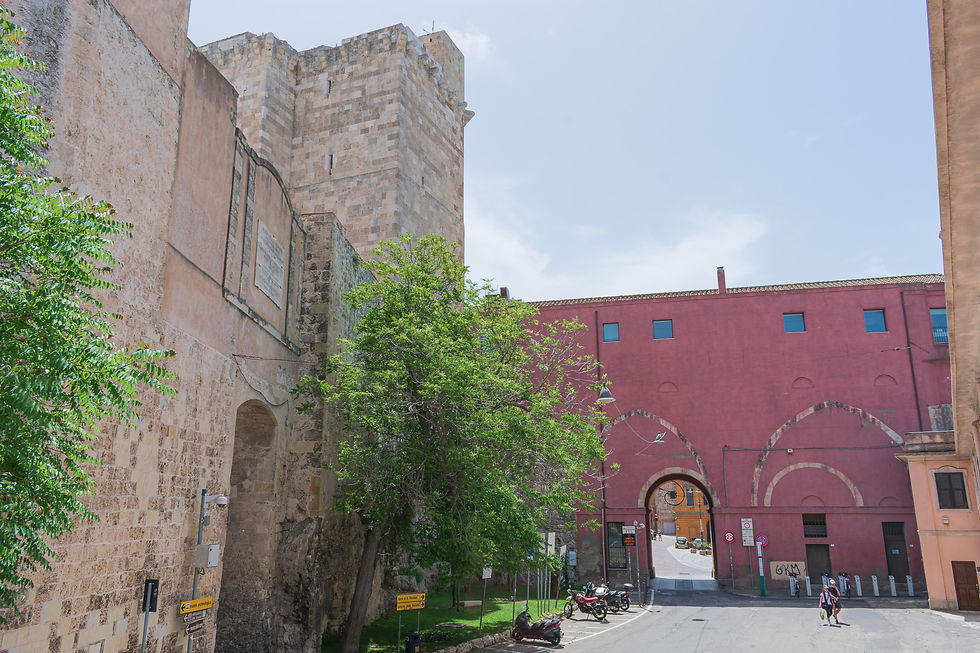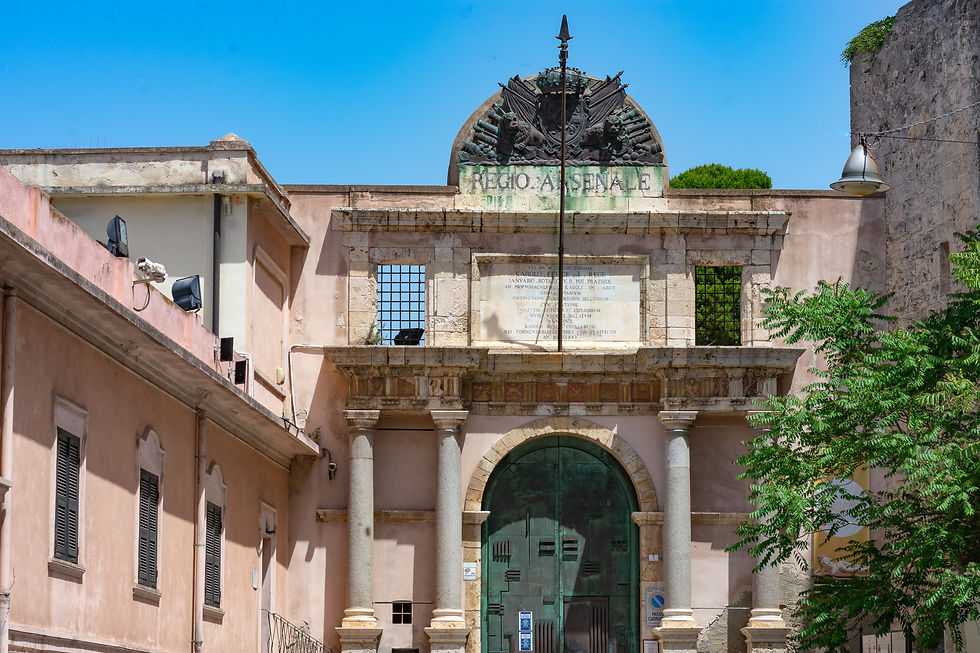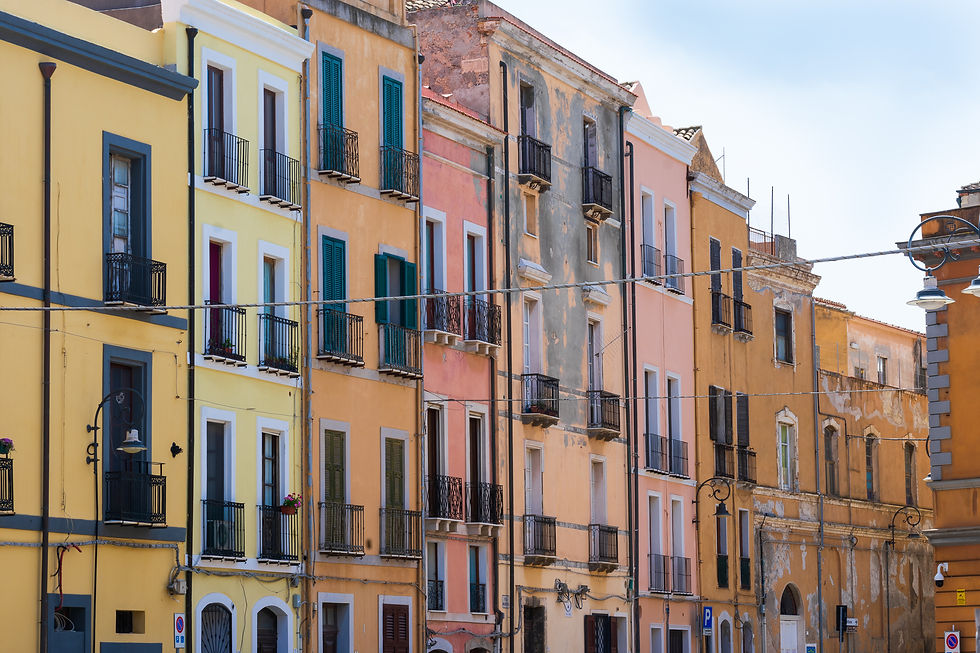Piazza Indipendenza, Cagliari
- Points of Interest

- Sep 1, 2022
- 2 min read

Surpassing the Arch, you will arrive on to the ancient square of Piazza Indipendenza, on the right of the gate is a reliance building that once hosted the Archaeological Museum before it was moved to Ciutadella dei Musei. It is a neoclassical building that on its façade has two sets of columns and other classical ornamental motifs. Originally this is where the female prisons were than the mint where coins were strucked. Today the building is closed to the public. In the flower bed in front of the building is an opening trough witch there is an access to an underground well that brought water to the quarter. It was essential to have a source of water in case of an attack. The underground opening is large enough to contain horses that triggered the mechanism to supply the water.

Get to know more about Cagliari Castello quarter with this walking tour
Turning your back to the flowerbed you can notice in front of you a line of buildings, some of them were important seats of organizations – Palazzo delle Seziate, that is next to the Torre di San Pancrazio, hosted sessions where the Spanish viceroy listened to the pleas of the prisoners sentenced to death and granted a pardon to free prisoners once a year. The Palazzo dei Coleggio dei Nobili, neighbouring the tower, was built in 1618 upon the archbishop Francisco d’Esquivels request for cis-noble families that could not afford tuition for their children. Another important building in found in front of Arco delle Seziate on the opposite side of the square on the corner between two narrow streets that go onwards into the quarter. Today it is the seat of Cagliari’s Mason Lodge, but it was built in 1686 as a general office. It was reconstructed after collapsing by the engineer Edmondo San Just, baron of Teulada, around the mid-1800. It is in neo-classical style and has a monumental staircase entryway. The façade is divided into two levels: on the ground floor an entrance gate resembling a Roman arch and the first floor with linear windows and window frames. On the right-hand sight of the building is via La Marmora and on the left Via Martini. The original names were respectively Ruga Mercatorium and Vicus Fabrorum – Merchant street and Blacksmith street, that indicated the commercial activities that went on during the Pisan era.
(from Cagliari Audioguide)





Comments